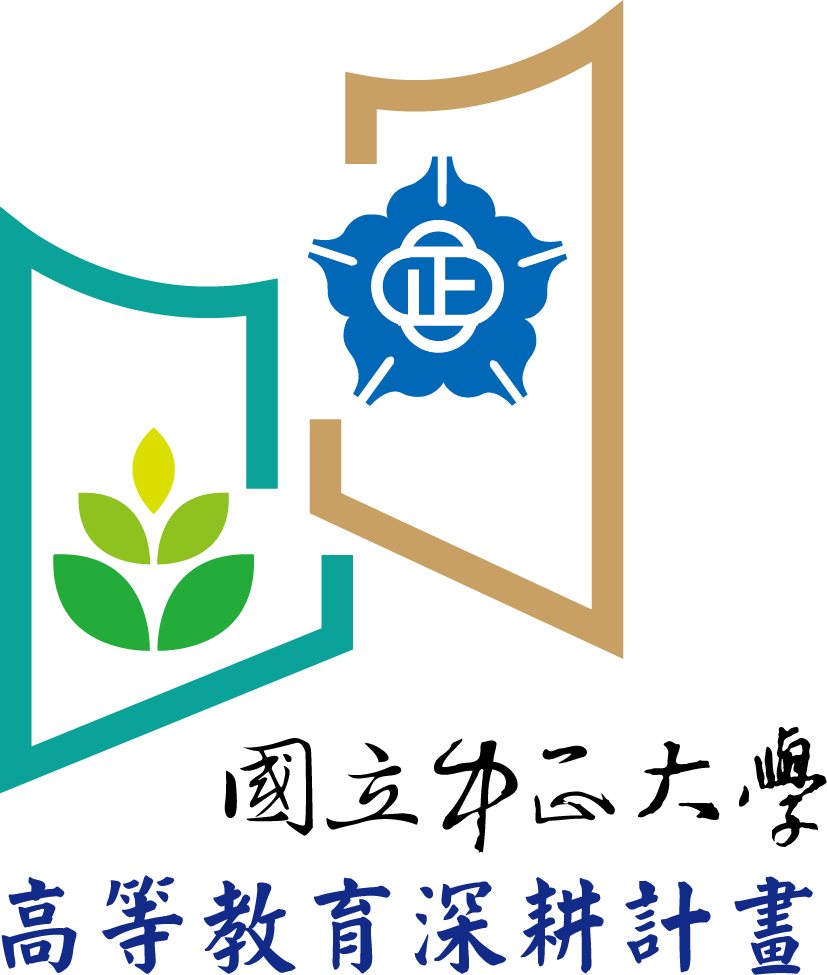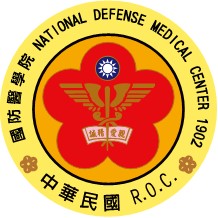
National Chiao Tung University
Booth No:M1211a
National Chiao Tung University
Artificial intelligence, wearable smart medical materials and high-end medical materials technology innovations and breakthroughs, and continue to integrate imaging, physiology, genetics, medical record information and big data to develop precision medicine.
National Chiao Tung University
Booth No:---
National Chiao Tung University
In new agricultural era, to implement the 3P concept: Predictable, Preventive, Precise, the team has successfully integrated from farm monitoring, AI analyzing and prescription of bio-reagent to provide a comprehensive green and smart agricultural management-AgriTalk AIoT.To achieve both the “Predictable” and “Precise”, we provide sensors and control module with high stability to assist farmers to monitor the farm accurately and in real-time. And further using the collecting data to customize the soil microbiome prediction system, smart fertilizing system, pests and diseases eruption prediction system for specific lands and crops. In “Preventive”, the team also develop and provide brand-new bio-reagents that can target pests specifically, harmless to human and pollinators, environmental friendly and less pest resistance.
In the agricultural market, we provide automatic control solution (Agriculture 3.0) and smart AI prediction solution (Agriculture 4.0) based on different demands of customers. AgriTalk AIoT system has already been implemented in various high value crop farm including: Chinese medicinal herbs such as turmeric, Salvia miltiorrhiza, strawberry, banana, etc. As conclusion, AgriTalk AIoT system can provide a more systematic, scientific driven farm managing style and a more environmental friendly solution to agricultural field.
National Chiao Tung University/Wen Liang Chen Associate Professor team
Booth No:---
National Chiao Tung University/Wen Liang Chen Associate Professor team
Our research uses two core technologies, including the semiconductor manufacturing methods and the special biomaterial to make biosensors with high quality of reproducibility, accuracy and stability, which meets the international criteria of massive production and certificate. Based on the core technologies, our team developed three kinds of COVID-19 biosensors used for viral protein, nucleotide and antibody detection. The three markers indicate the different infection stages of patients, which can help hospitals make precise management to each patient, realizing the goal of precision medicine. Moreover, our team used electrochemical method to develop a convenient and fast-to-use detection machine. The detection machine can deliver the report to the medical personnel in real time and everywhere. We hope this system can not only enhance the efficiency of disease management but also reduce the infectious risk and the burden of the medical personnel.
National Chiao Tung University/Wen Liang Chen Associate Professor team
Booth No:---
National Chiao Tung University/Wen Liang Chen Associate Professor team
Our research uses two core technologies, including the semiconductor manufacturing methods and the special biomaterial to make biosensors with high quality of reproducibility, accuracy and stability, which meets the international criteria of massive production and certificate. Based on the core technologies, our team developed three kinds of COVID-19 biosensors used for viral protein, nucleotide and antibody detection. The three markers indicate the different infection stages of patients, which can help hospitals make precise management to each patient, realizing the goal of precision medicine. Moreover, our team used electrochemical method to develop a convenient and fast-to-use detection machine. The detection machine can deliver the report to the medical personnel in real time and everywhere. We hope this system can not only enhance the efficiency of disease management but also reduce the infectious risk and the burden of the medical personnel.
National Chung Cheng University
Booth No: L1106
National Chung Cheng University
Organized by the Academia industry alliance of wisdom biomedical and optomechanical cross-domain integration in National Chung Cheng University . The exhibition is as follows:1.Hitspectra Intelligent Technology Co., Ltd. -Our specialty is the development of cutting-edge identification systems, which are hyperspectral imaging, medical displays, and other technologies. Most of our products are non-invasive and can greatly improve the efficiency and credibility of modern medical industry.
Combines with hyperspectral imaging, image sensors, and artificial intelligence algorithms, the hyperspectral cameras provide high-resolution and extracts spectral information to achieve excellent identification. It can be integrated with endoscopes, ophthalmoscopes, dermoscopes, microscopes, etc. The medical display is mainly used to assist doctors in identifying pathological features and improve the diagnosis efficiency to achieve early diagnosis.(https://www.hitspectra.com/)
2.TO2M Corporation
3. National Chung Cheng University Center for E-manufacturing and E-commer-The bamboo charcoal air filter adopts the effect of direct bamboo charcoal to filter the air. The outer shell of the air filter also uses bamboo as the modeling material, with natural degradation and recycling as the main goal. At the same time, it has the functions of negative ions and ultraviolet light to provide clean air.
2. The key of smart endoscope display is AI recognition, combines with hyperspectral analysis, aids physicians in interpreting esophageal images.
3. The bamboo charcoal air filter-Mass production development, technology transfer
National Chung Cheng University
Booth No:---A059
National Chung Cheng University
We presenting an integrated microfluidic optoelectronic biosensing system for identifying pathogens and antibiotic susceptibility and quantification of biomarkers of sepsis patients. It provides the total solution of sepsis for early diagnosis, pathogen identification, antibiotic susceptibility and treatment outcome evaluating with quite importance and application potential. This work develops an electro-kinetic concentrator for purifying and concentrating pathogens and biomarkers, a photosensitive thin film measurement technology used to identify the pathogen and antibiotic susceptibility on the biochip directly in 10 minute and a grating waveguide biosensor for real-time quantifying the biomarkers of sepsis patients. Five common sepsis pathogens and antibiotic susceptibility were identified by the system. The test procedure is only three steps, simple and easy to automate, reduced the time required for antibiotic susceptibility screening from 2 days to 3.5 hours. Compared with the results of the current clinical microbial identification system VITEK2, the coincidence rate is currently 90.6 %. The miniaturized grating waveguide sensor was used to instantly quantify the concentration of the biomarkers (CRP and PCT) in 1 hour by our biomarkers rapid quantification system. Whether identifying pathogens and antibiotic susceptibility or quantification of biomarkers, compared with the current clinical testing process, the detection time can be shortened greatly.
National Chung Cheng University、Kaohsiung Medical University Chung-Ho Memorial Hospital
Booth No:---
National Chung Cheng University、Kaohsiung Medical University Chung-Ho Memorial Hospital
The key technologies of the smart endoscopy display are AI identification and hyperspectral image analysis, that provide high resolution and high stability. We aggregated a large amount of lesion identification information and established an AI model with the ability to identify initial symptoms, so the information can be displayed in real-time while the doctor is performing an endoscopic examination. This helps the physician to quickly identify the lesion and its location, and solve the difference of unexperienced physicians in traditional method.
National Defense Medical Center
Booth No:L632
National Defense Medical Center
Covid-19抗原檢測試劑 (賴思佳副研員研究團隊)
COVID-19 infecting over a million people and causing a hundred thousand deaths. We generated a series of anti-SARS spike monoclonal antibodies and then to develop two kinds of COVID-19 antigen testing reagents. The COVID-19 antigen rapid test could detect SARS CoV-2 but exhibited no cross-reactivity with respiratory infection-related viruses such as other human coronaviruses, influenza A and B viruses. Antigen detection is simply, more suitable for the front line and can shorten testing time, which can contribute to the current efforts in fighting against this major pandemic.
----------------------------------------------------------------------------
偵測登革熱病毒之微流體晶片 (魏俊傑副研員研究團隊)
This research aims to develop a rapid microfluidic biochip for detecting dengue fever infection, focusing on the production of specific antibodies for different dengue virus serotypes. The bio-sensing chip combined with analysis and system assembly, high sensitivity of sensing technology and mass production benefits. The core sensing technology of the system uses electrochemical impedance spectroscopy (Electrochemical Impedance Spectroscopy, EIS) technology to sense the electrical impedance of the biologically bound beads in the microfluidic chip. It has a single energy, clean, non-invasive, and versatile advanced advantages. The EIS microfluidic chip that can measure dengue virus NS1 protein in early phase of DEV infection.
National Defense Medical Center
Booth No:---
National Defense Medical Center
Triple-negative breast cancer (TNBC) accounts for 10-15% of all breast cancers. TNBC carries a poorer prognosis due to higher distant recurrence rates and has poor response to hormones or ant-HER2 therapy due to testing negative for estrogen receptors, progesterone receptors, and excess HER2 protein. In clinical practice, no genetic marker is available for prognosis prediction or target therapy for TNBC.We found six novel suppressor genes, IGHA1, IGHD, IGHG1, IGHG3, IGLC2 and IGLJ3 for TNCB and general breast cancer by means of big data bioinformatics and genetic co-expressed genes. These genes are especially performed good prediction of relapse-free survival (RFS) and distant metastasis-free survival (DMFS). In addition, these genes have great potential served as an immunotherapy target or as a selection guideline of immunotherapy for physicians.
We aim at developing rapid genetic test paper kit for TNBC prognosis prediction and treatment effect monitoring using blood drops. The estimated selling price of this test paper kit is $10-20 US dollars, far lower than the price of current commercial breast cancer genetic testing ($200-4000 US dollars). These genes are dynamic monitoring indicators of prognosis. The kits can be used multiple times in a lifetime. Given that the potential customers are followed up every 3 months and TNBC patients survive for 5 years, the current maximum potential markets are US $720 thousands per year in Taiwan and US $102 million per year worldwide. The ongoing plan of developing rapid genetic test paper kit has been discussed and planned with all the required bio-tec corporation, and signed the cooperation memorandum.
key words: genetic biomarkers, triple negative breast cancer, breast cancer, prognosis, recurrence, relapse, genetic test paper
National Defense Medical Center
Booth No:---
National Defense Medical Center
1. anti-dengue virus NS1 monoclonal antibodies2. Dengue virus serotype NS1 rapid test



